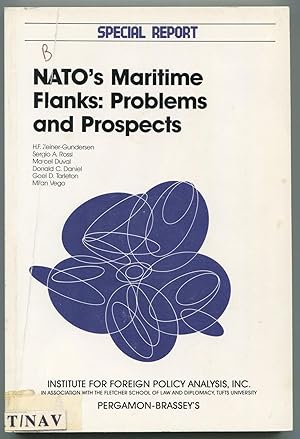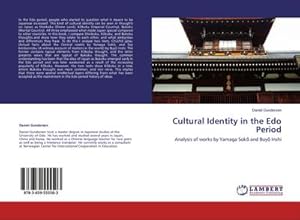daniel gundersen (11 Ergebnisse)
Suchfilter
Produktart
- Alle Product Types
- Bücher (11)
- Magazine & Zeitschriften (Keine weiteren Ergebnisse entsprechen dieser Verfeinerung)
- Comics (Keine weiteren Ergebnisse entsprechen dieser Verfeinerung)
- Noten (Keine weiteren Ergebnisse entsprechen dieser Verfeinerung)
- Kunst, Grafik & Poster (Keine weiteren Ergebnisse entsprechen dieser Verfeinerung)
- Fotografien (Keine weiteren Ergebnisse entsprechen dieser Verfeinerung)
- Karten (Keine weiteren Ergebnisse entsprechen dieser Verfeinerung)
- Manuskripte & Papierantiquitäten (Keine weiteren Ergebnisse entsprechen dieser Verfeinerung)
Zustand Mehr dazu
- Neu (10)
- Wie Neu, Sehr Gut oder Gut Bis Sehr Gut (Keine weiteren Ergebnisse entsprechen dieser Verfeinerung)
- Gut oder Befriedigend (Keine weiteren Ergebnisse entsprechen dieser Verfeinerung)
- Ausreichend oder Schlecht (1)
- Wie beschrieben (Keine weiteren Ergebnisse entsprechen dieser Verfeinerung)
Einband
- alle Einbände
- Hardcover (Keine weiteren Ergebnisse entsprechen dieser Verfeinerung)
- Softcover (11)
Weitere Eigenschaften
- Erstausgabe (Keine weiteren Ergebnisse entsprechen dieser Verfeinerung)
- Signiert (Keine weiteren Ergebnisse entsprechen dieser Verfeinerung)
- Schutzumschlag (Keine weiteren Ergebnisse entsprechen dieser Verfeinerung)
- Angebotsfoto (6)
- Keine Print-on-Demand Angebote (6)
Sprache (2)
Preis
- Beliebiger Preis
- Weniger als EUR 20
- EUR 20 bis EUR 45
- Mehr als EUR 45 (Keine weiteren Ergebnisse entsprechen dieser Verfeinerung)
Gratisversand
Land des Verkäufers
Verkäuferbewertung
-
Cultural Identity in the Edo Period: Analysis of works by Yamaga Sok? and Buy? Inshi
Verlag: LAP LAMBERT Academic Publishing, 2014
ISBN 10: 3659555509 ISBN 13: 9783659555503
Sprache: Englisch
Anbieter: Lucky's Textbooks, Dallas, TX, USA
EUR 22,98
EUR 3,42 für den Versand innerhalb von/der USAAnzahl: Mehr als 20 verfügbar
In den WarenkorbZustand: New.
-
Cultural Identity in the Edo Period: Analysis of works by Yamaga Sok? and Buy? Inshi
Verlag: LAP LAMBERT Academic Publishing, 2014
ISBN 10: 3659555509 ISBN 13: 9783659555503
Sprache: Englisch
Anbieter: Ria Christie Collections, Uxbridge, Vereinigtes Königreich
EUR 23,75
EUR 13,65 für den Versand von Vereinigtes Königreich nach USAAnzahl: Mehr als 20 verfügbar
In den WarenkorbZustand: New. In.
-
Cultural Identity in the Edo Period: Analysis of works by Yamaga Soko and Buyo Inshi
Verlag: LAP LAMBERT Academic Publishing 2014-07-31, 2014
ISBN 10: 3659555509 ISBN 13: 9783659555503
Sprache: Englisch
Anbieter: Chiron Media, Wallingford, Vereinigtes Königreich
EUR 21,55
EUR 17,64 für den Versand von Vereinigtes Königreich nach USAAnzahl: 10 verfügbar
In den WarenkorbPaperback. Zustand: New.
-
Cultural Identity in the Edo Period
Verlag: LAP LAMBERT Academic Publishing Jul 2014, 2014
ISBN 10: 3659555509 ISBN 13: 9783659555503
Sprache: Englisch
Anbieter: buchversandmimpf2000, Emtmannsberg, BAYE, Deutschland
Taschenbuch. Zustand: Neu. Neuware -In the Edo period, people who started to question what it meant to be Japanese increased. This kind of cultural identity can be seen in thoughts on Japan as Shinkoku (Divine Land), K¿koku (Imperial Country), Bukoku (Martial Country). All three emphasised what made Japan special compared to other countries. In this book, I compare Shinkoku, K¿koku, and Bukoku thoughts and show how they relate to each other, and what similarities and differences they have. To do this I analyse two texts, Ch¿ch¿ jijitsu (Actual facts about the Central realm) by Yamaga Sok¿, and Seji kenbunroku (A witness account of matters in the world) by Buy¿ Inshi. The former contains typical elements from K¿koku thought, and the latter presents views that are typical of Bukoku thought. The common understanding has been that the idea of Japan as Bukoku emerged early in the Edo period and was later weakened as a result of the increasing popularity of K¿koku. However, the two texts show K¿koku in a time where Bukoku thought was more common, and vice versa. This implies that there were several intellectual layers differing from what has been accepted as the mainstream in the Edo period history of ideas.Books on Demand GmbH, Überseering 33, 22297 Hamburg 76 pp. Englisch.
-
Cultural Identity in the Edo Period | Analysis of works by Yamaga Sok¿ and Buy¿ Inshi
Verlag: LAP LAMBERT Academic Publishing, 2014
ISBN 10: 3659555509 ISBN 13: 9783659555503
Sprache: Englisch
Anbieter: preigu, Osnabrück, Deutschland
Taschenbuch. Zustand: Neu. Cultural Identity in the Edo Period | Analysis of works by Yamaga Sok¿ and Buy¿ Inshi | Daniel Gundersen | Taschenbuch | 76 S. | Englisch | 2014 | LAP LAMBERT Academic Publishing | EAN 9783659555503 | Verantwortliche Person für die EU: BoD - Books on Demand, In de Tarpen 42, 22848 Norderstedt, info[at]bod[dot]de | Anbieter: preigu.
-
NATO's Maritime Flanks: Problems and Prospects - Special Report 1987
Verlag: Pergamon-Brasseys, Washington., 1987
Anbieter: LibrairieLaLettre2, Villefranche de Lauragais, Frankreich
Broché. Zustand: Etat moyen. in-8 Description :125 pp. Cotes de bibliothèque. Une grande pliure sur la couverture. Langue : Anglais Nb de volumes : 1.
-
Cultural Identity in the Edo Period Analysis of works by Yamaga Sok and Buy Inshi
Verlag: LAP LAMBERT Academic Publishing, 2014
ISBN 10: 3659555509 ISBN 13: 9783659555503
Sprache: Englisch
Anbieter: PBShop.store US, Wood Dale, IL, USA
EUR 28,64
Kostenlos für den Versand innerhalb von/der USAAnzahl: Mehr als 20 verfügbar
In den WarenkorbPAP. Zustand: New. New Book. Shipped from UK. THIS BOOK IS PRINTED ON DEMAND. Established seller since 2000.
-
Cultural Identity in the Edo Period Analysis of works by Yamaga Sok and Buy Inshi
Verlag: LAP LAMBERT Academic Publishing, 2014
ISBN 10: 3659555509 ISBN 13: 9783659555503
Sprache: Englisch
Anbieter: PBShop.store UK, Fairford, GLOS, Vereinigtes Königreich
EUR 26,70
EUR 3,75 für den Versand von Vereinigtes Königreich nach USAAnzahl: Mehr als 20 verfügbar
In den WarenkorbPAP. Zustand: New. New Book. Delivered from our UK warehouse in 4 to 14 business days. THIS BOOK IS PRINTED ON DEMAND. Established seller since 2000.
-
Cultural Identity in the Edo Period
Verlag: LAP LAMBERT Academic Publishing Jul 2014, 2014
ISBN 10: 3659555509 ISBN 13: 9783659555503
Sprache: Englisch
Anbieter: BuchWeltWeit Ludwig Meier e.K., Bergisch Gladbach, Deutschland
Taschenbuch. Zustand: Neu. This item is printed on demand - it takes 3-4 days longer - Neuware -In the Edo period, people who started to question what it meant to be Japanese increased. This kind of cultural identity can be seen in thoughts on Japan as Shinkoku (Divine Land), K koku (Imperial Country), Bukoku (Martial Country). All three emphasised what made Japan special compared to other countries. In this book, I compare Shinkoku, K koku, and Bukoku thoughts and show how they relate to each other, and what similarities and differences they have. To do this I analyse two texts, Ch ch jijitsu (Actual facts about the Central realm) by Yamaga Sok , and Seji kenbunroku (A witness account of matters in the world) by Buy Inshi. The former contains typical elements from K koku thought, and the latter presents views that are typical of Bukoku thought. The common understanding has been that the idea of Japan as Bukoku emerged early in the Edo period and was later weakened as a result of the increasing popularity of K koku. However, the two texts show K koku in a time where Bukoku thought was more common, and vice versa. This implies that there were several intellectual layers differing from what has been accepted as the mainstream in the Edo period history of ideas. 76 pp. Englisch.
-
Cultural Identity in the Edo Period
Verlag: LAP LAMBERT Academic Publishing, 2014
ISBN 10: 3659555509 ISBN 13: 9783659555503
Sprache: Englisch
Anbieter: moluna, Greven, Deutschland
EUR 22,32
EUR 48,99 für den Versand von Deutschland nach USAAnzahl: Mehr als 20 verfügbar
In den WarenkorbZustand: New. Dieser Artikel ist ein Print on Demand Artikel und wird nach Ihrer Bestellung fuer Sie gedruckt. Autor/Autorin: Gundersen DanielDaniel Gundersen took a master degree in Japanese studies at the University of Oslo. He has worked and studied several years in Japan, China and Korea. He worked as a Chinese language teacher for two years as well as .
-
Cultural Identity in the Edo Period : Analysis of works by Yamaga Sok¿ and Buy¿ Inshi
Verlag: LAP LAMBERT Academic Publishing, 2014
ISBN 10: 3659555509 ISBN 13: 9783659555503
Sprache: Englisch
Anbieter: AHA-BUCH GmbH, Einbeck, Deutschland
Taschenbuch. Zustand: Neu. nach der Bestellung gedruckt Neuware - Printed after ordering - In the Edo period, people who started to question what it meant to be Japanese increased. This kind of cultural identity can be seen in thoughts on Japan as Shinkoku (Divine Land), K koku (Imperial Country), Bukoku (Martial Country). All three emphasised what made Japan special compared to other countries. In this book, I compare Shinkoku, K koku, and Bukoku thoughts and show how they relate to each other, and what similarities and differences they have. To do this I analyse two texts, Ch ch jijitsu (Actual facts about the Central realm) by Yamaga Sok , and Seji kenbunroku (A witness account of matters in the world) by Buy Inshi. The former contains typical elements from K koku thought, and the latter presents views that are typical of Bukoku thought. The common understanding has been that the idea of Japan as Bukoku emerged early in the Edo period and was later weakened as a result of the increasing popularity of K koku. However, the two texts show K koku in a time where Bukoku thought was more common, and vice versa. This implies that there were several intellectual layers differing from what has been accepted as the mainstream in the Edo period history of ideas.








